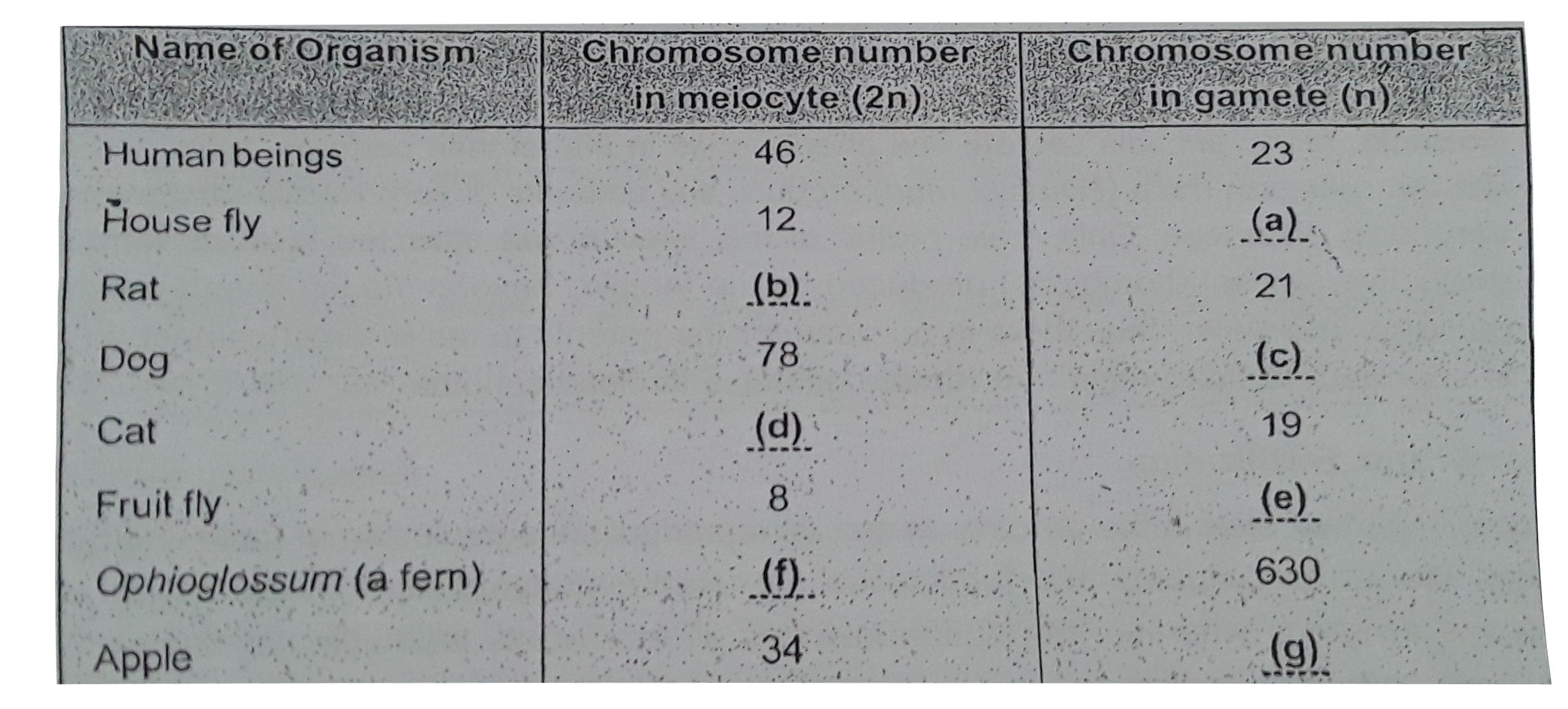During reproduction the chromosome nmber (2n) reduces to half (n) in the gametes and again the original number (2n) is restored in the offspring. What are the processes through which these events take place?
To answer the question regarding the processes through which the chromosome number (2n) reduces to half (n) in the gametes and is restored to the original number (2n) in the offspring, we can break it down into the following steps:
1. Understanding Chromosome Number:
- In humans, the normal chromosome number is diploid (2n), which means there are two sets of chromosomes (one from each parent).
Hint: Remember that diploid (2n) indicates two complete sets of chromosomes.
2. Formation of Gametes:
- The first process is gametogenesis, which is the formation of gametes (sperm and egg). During this process, the diploid cells undergo a special type of cell division called meiosis.
Hint: Gametogenesis leads to the production of haploid gametes, which contain half the chromosome number.
3. Meiosis:
- Meiosis consists of two rounds of division (meiosis I and meiosis II) and results in four haploid cells from one diploid cell. This reduction in chromosome number from 2n to n occurs during meiosis I, specifically during the separation of homologous chromosomes.
Hint: Focus on meiosis as the key process that reduces the chromosome number in gametes.
4. Fertilization:
- The second process is fertilization, where a male gamete (sperm) and a female gamete (egg) fuse together. This fusion restores the diploid chromosome number (2n) in the zygote, which is the first cell of the new offspring.
Hint: Fertilization combines two haploid gametes to form a diploid zygote.
5. Restoration of Chromosome Number:
- As a result of fertilization, the zygote now has the full diploid set of chromosomes (2n), which will develop into the offspring.
Hint: Remember that the zygote is the result of the fusion of two haploid gametes.
Conclusion:
The two key processes involved in the reduction and restoration of chromosome numbers during reproduction are:
- Gametogenesis (specifically meiosis) for the reduction from 2n to n.
- Fertilization for the restoration from n back to 2n in the offspring.
- In humans, the normal chromosome number is diploid (2n), which means there are two sets of chromosomes (one from each parent).
- The first process is gametogenesis, which is the formation of gametes (sperm and egg). During this process, the diploid cells undergo a special type of cell division called meiosis.
- Meiosis consists of two rounds of division (meiosis I and meiosis II) and results in four haploid cells from one diploid cell. This reduction in chromosome number from 2n to n occurs during meiosis I, specifically during the separation of homologous chromosomes.
- The second process is fertilization, where a male gamete (sperm) and a female gamete (egg) fuse together. This fusion restores the diploid chromosome number (2n) in the zygote, which is the first cell of the new offspring.
- As a result of fertilization, the zygote now has the full diploid set of chromosomes (2n), which will develop into the offspring.
The two key processes involved in the reduction and restoration of chromosome numbers during reproduction are:
- Gametogenesis (specifically meiosis) for the reduction from 2n to n.
- Fertilization for the restoration from n back to 2n in the offspring.
Topper's Solved these Questions
- BOOK - NCERT EXEMPLAR ENGLISHCHAPTER - HUMAN REPRODUCTION EXERCISE - SHORT ANSWER TYPE QUESTIONS10videos
HUMAN REPRODUCTION
- BOOK - NCERT EXEMPLAR ENGLISHCHAPTER - HUMAN REPRODUCTION EXERCISE - LONG ANSWER TYPE QUESTIONS5videos
HUMAN REPRODUCTION
- BOOK - NCERT EXEMPLAR ENGLISHCHAPTER - HUMAN REPRODUCTION EXERCISE - LONG ANSWER TYPE QUESTIONS5videos
HUMAN REPRODUCTION
- BOOK - NCERT EXEMPLAR ENGLISHCHAPTER - HUMAN HEALTH AND DISEASESEXERCISE - All Questions69videos
HUMAN HEALTH AND DISEASES
- BOOK - NCERT EXEMPLAR ENGLISHCHAPTER - MICROBES IN HUMAN WELFARE EXERCISE - Long Answer Type Questions6videos
MICROBES IN HUMAN WELFARE
Similar Questions
Knowledge Check
- Question 1 - Select One
If a butterfly has chromosome number 360 in its meiocyte (2n). What will be the chromosome number in its gametes ?
A380B180C95D760
If 2n=12, the number of chromosomes in nucellus, integument and egg cell would be:
View SolutionIf the somatic chromosome number of a gymnospermous plant is 2n = 30, what would be the chromosome number in its endosperm tissue ?
View SolutionThe number of chromosomes in meiocyte (2n) in apple is
View SolutionIn plants maximum number of chromosomes (2n=1262) are found in
View SolutionThe total number of electrons that take part in forming the bond in N2 is .
View SolutionThe number of natural numbers n for which 15n2+8n+6n is a natural number is:
View SolutionWhat would be the charge in radius of nth orbit, if the mass of electron reduces to half of its original value ?
View Solution


